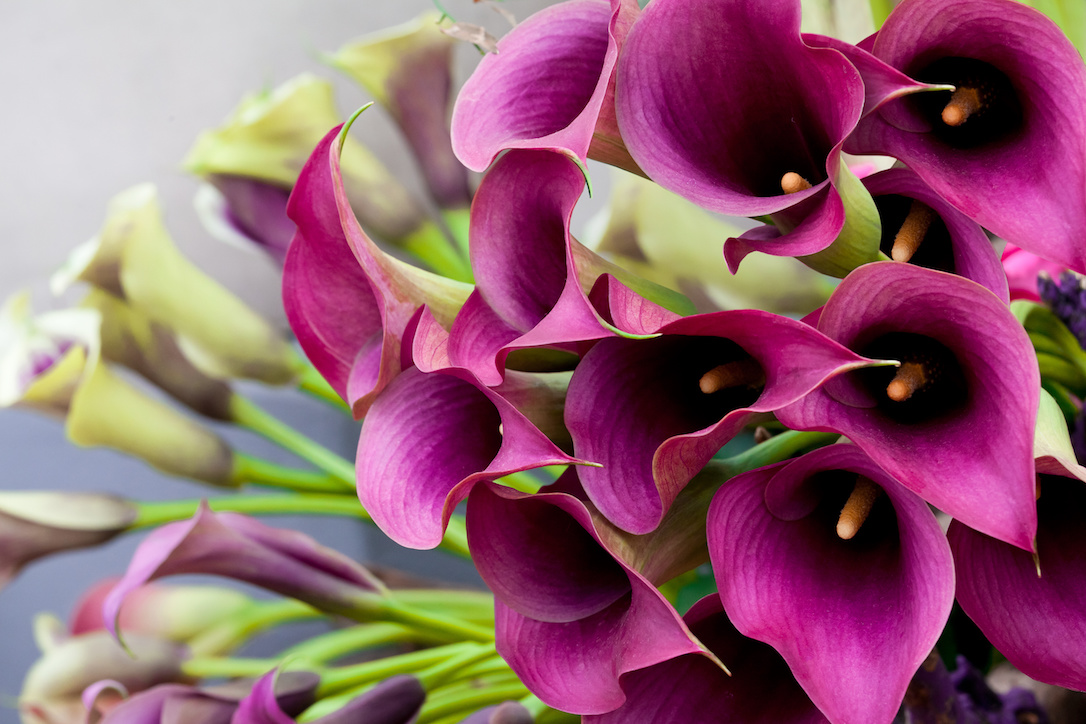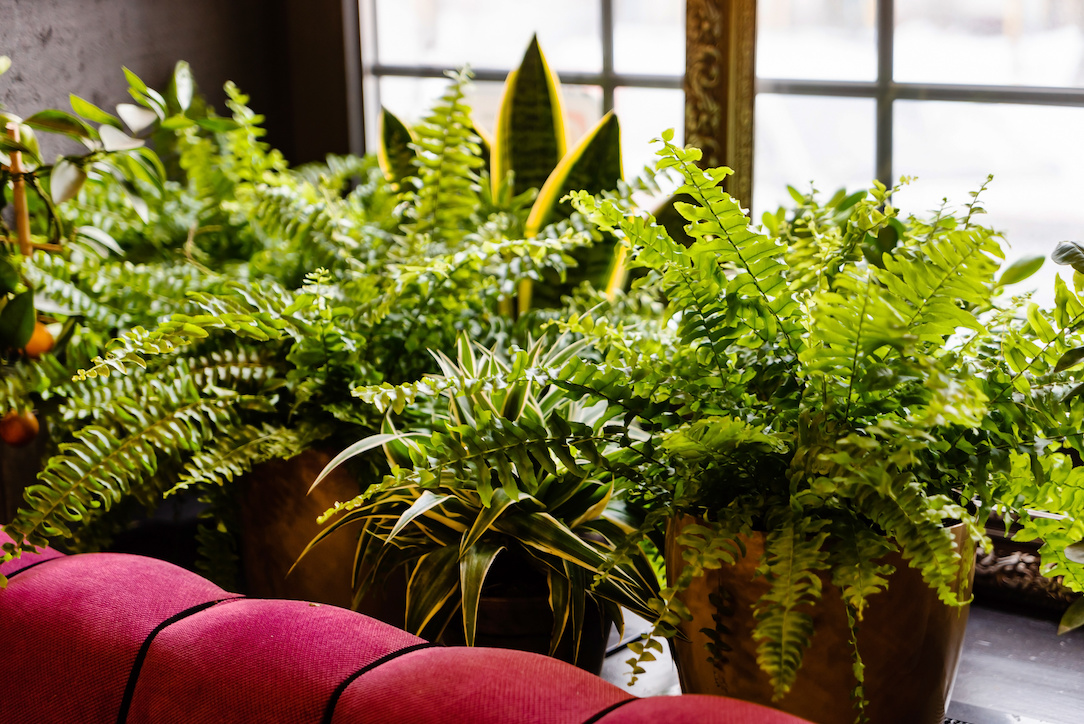
Vika Fleisher/Unsplash
Red roses are the classic romantic flower, and as cliche as they might have become, there’s a reason they’ve stood the test of time. Still, there are so many more rosy hues you can choose from. This Valentine’s Day (or really, any holiday), get a little more specific with your flowering gift by choosing color to symbolize meaning. If you’re not as into roses, consider skipping ahead to hear about other flowers you might want to bequeath your loved ones.
White roses often symbolize purity or new beginnings, but when mixed with red roses, they can mean unity. The warmer colors of yellow and peach stand for friendship and sincere gratitude, respectively, whereas orange is bold in its messages of passion and energy. (In the past, yellow was more associated with jealousy or disappointment, but that meaning is rarely used now.)
Pink is also a classic color for roses and usually stands for femininity, sweetness, or poise. However, light pink can emphasize gentleness and happiness while darker pinks can highlight appreciation and acknowledgment. Finding buds that go from yellow to red can be a nice message of how your relationship went from friendship to more, and lavender roses not only provide a refreshing pop of color but also mean love at first sight. Blue roses are quite rare to find in flower shops and, appropriately, they mean attaining the impossible or, more generally, the impossible.
This doesn’t cover all of the rose colors, and like most passed down symbolism, colors mean different things to different people. If you want to change it up a bit but still keep to the rose theme, consider single-petal or double-petal rose varieties.
Other flowers have symbolism, too (and oftentimes their colors align with rose color meanings). Tell your loved one how you feel this Valentine’s Day with the help of some of the following blooms.:

nooumaporn/Adobe Stock
Alstromeria
Alstromeria may not be a name you are as familiar with, but these small, lily-like flowers are popular in cut-flower bouquets. Also known as the Peruvian Lily, alstromeria represent devotion and friendship.
Baby’s Breath
Baby’s breath is a fairly ubiquitous flower in classic rose bouquets, but its commonness veils the amount of meanings that people have packed into its dainty blooms. The white, of course, harkens to innocence, purity, and new beginnings, but more than that, the flower represents eternal love in any relationship, whether it’s platonic, familial, or romantic. Some people also attribute baby’s breath to rekindling lost relationships and self-discipline in love.

ARTENS/Adobe Stock
Calla Lilies
Calla lilies are often seen at weddings and religious events, but they also come with their own Greek myth. The myth varies depending on your source, but here is a watered down version of it: When Hercules was born to a mortal woman, Zeus wanted him to be strong, so he brought him to Hera to nurse. When she found out who the baby was—that Zeus had been infidel once again—she threw Hercules away from her, causing her breast milk to splash across the sky. The drops that fell to earth transformed into calla lilies. When Aphrodite saw the lilies, she was jealous of their beauty and cursed them so that they would have the prominent spike inside of them.
Because of that central spike (the true flower of the plant), calla lilies are associated with lust and fertility. However, because of their depictions in Christian art, they are also connected with faith, purity, and resurrection (which also leads to a connection with death). While calla lilies have very similar color connotations to roses, purple means passion, and black means enigmatic elegance.
Daisies
Daisies have even more myths and potential meanings tied to them, so maybe give your partner a clue as to which meaning you mean. They’re linked with the Noridc goddess Freya, who stands for motherhood, fertility, and beauty; in Celtic folklore, gods give them to parents who have lost their child; and in Roman myths, they can symbolize self-love, transformation, and purity (to escape unwanted advances, the nymph Belides literally changed into a daisy).
Daisies by their disposition are cheery, joyful, and positive. If you’re wanting to choose them for your true love, tell them this: Daisies are actually made of two flowers, the yellow middle and the white outer ring, but because they work so well together, they have become one.

Maksim Shebeko/Adobe Stock
Ferns
Ferns can be a great idea for someone who prefers potted plants over cut flowers. Across cultures, they have been known to signify plenty of goodness: happiness, security and confidence, riches, new life and new relationships, family and its descendants, and sincerity.
Gladiolas
Gladiolas represent honor, strength, and remembrance. Playing off of their sword-shaped leaves, there have been more than a few punny instances where the flower has been given as a symbol of infatuation because the heart has been “pierced” with love and admiration.
Ivy
Ivy is perfect for anyone important in your life because it represents continuity and constancy, binding, faithfulness, durability, and affection. Like the fern, it can easily be given as a long-lasting potted plant.
This greenery, too, has its lore: Depending on which story you hear (and probably the teller’s love of plants), even in death, the famed lovers Tristan and Isolde couldn’t be together. The king placed them in separate graves, but an ivy vine grew out of each, meeting in the middle and intertwining.

Christine/Adobe Stock
Tulips
Tulips, like many other flowers, are connected with good things and bad, including charity and forgotten love. (Obviously, you probably wouldn’t give someone a flower representing the latter.) Most romantically, they symbolize perfect love, particularly the red tulips. The Persian and Turkish stories vary, but it boils down to two people: Farhad and Shirin. They were deeply in love, but they were star-crossed; in most stories, one is a commoner and one is royal. And, just like Shakespeare’s Romeo and Juliet, Farhad could not live in a world without Shirin in it and vice versa. Where their blood spilled, red tulips grew.
Other popular tulip colors include yellow (cheerfulness), white (forgiveness and worthiness), purple (royalty), and pink (affection and love, platonic or otherwise). Choose between solid-colored tulips or variegated tulips, and if you’re feeling fancy, consider the parrot tulip, as seen above.
Sunflowers
Sunflowers symbolize adoration, happiness, loyalty, and longevity. Unsurprisingly, most of these ideas stem from not only their resemblance to the sun but the wives’ tale that they always turn their faces toward it. Some people associate the sunflower with the Greek myth of Helios, the sun god, and the nymph Clytie, although that story actually refers to a heliotrope flower. In the story, Clytie, who pines for Helios, is turned into a sunflower (out of pity or punishment, depending on which version you hear). Even in flower form, she still follows Helios across the sky. While this certainly isn’t a cheery myth, it doesn’t dampen the sunflowers’ ability to brighten anyone’s day.






